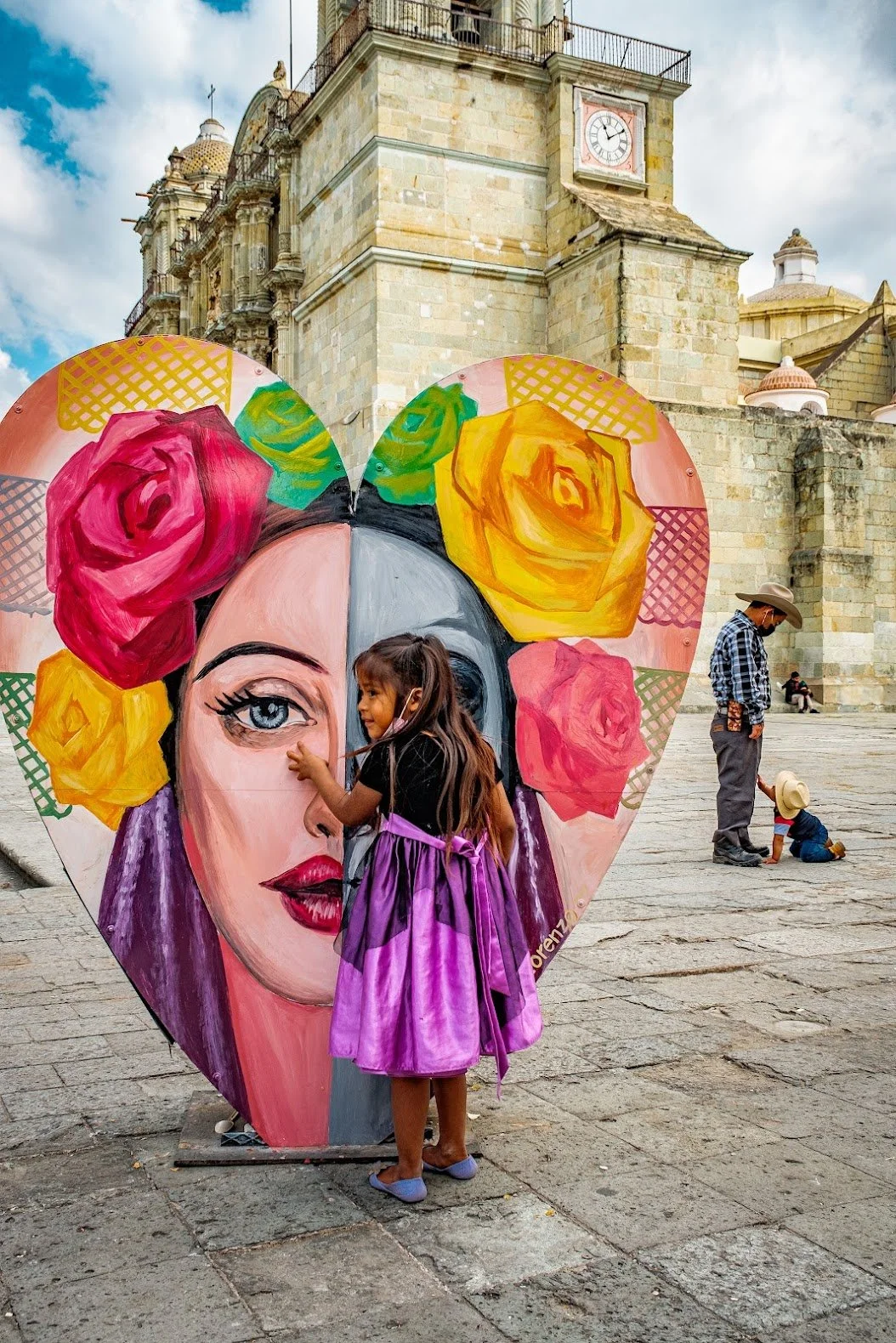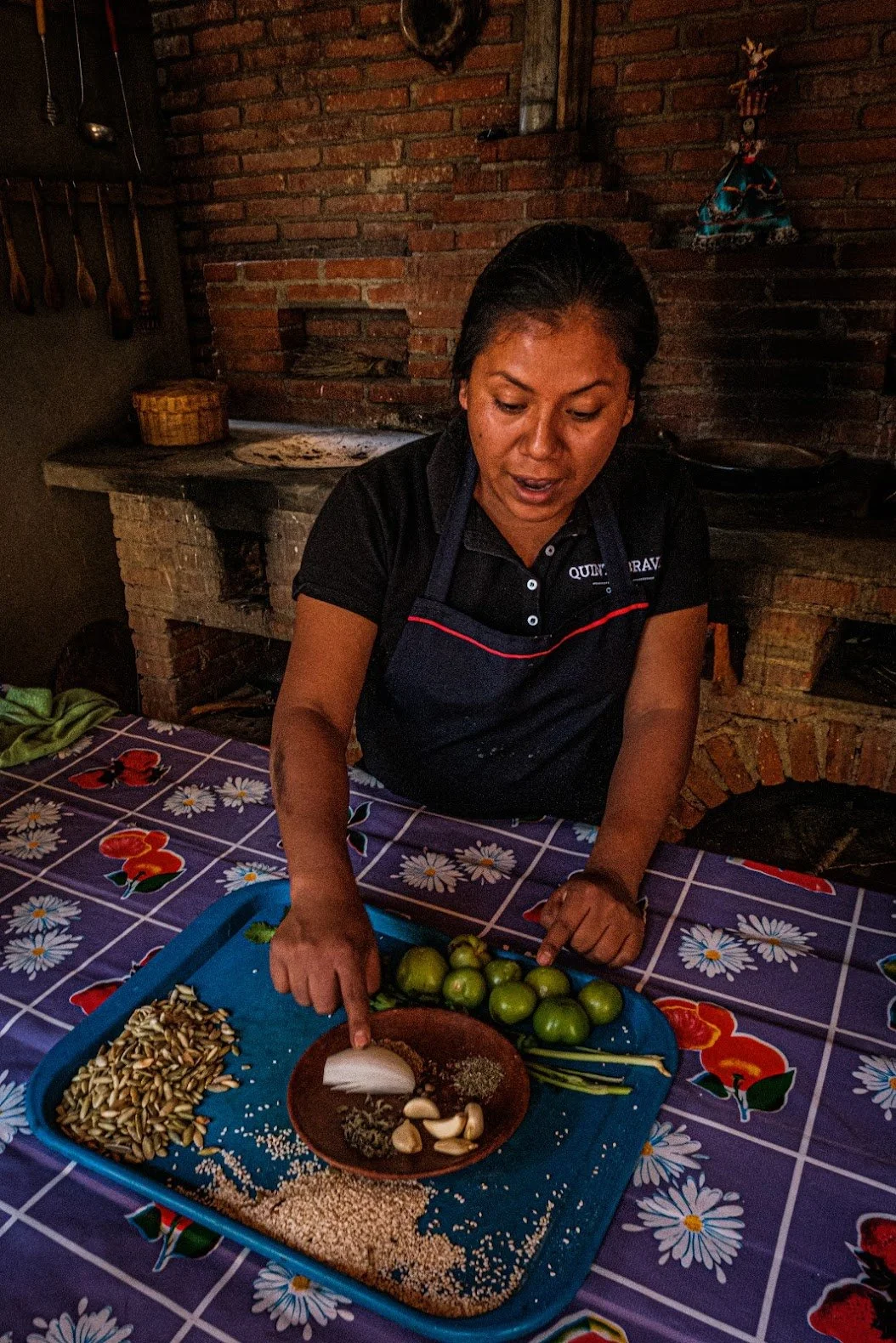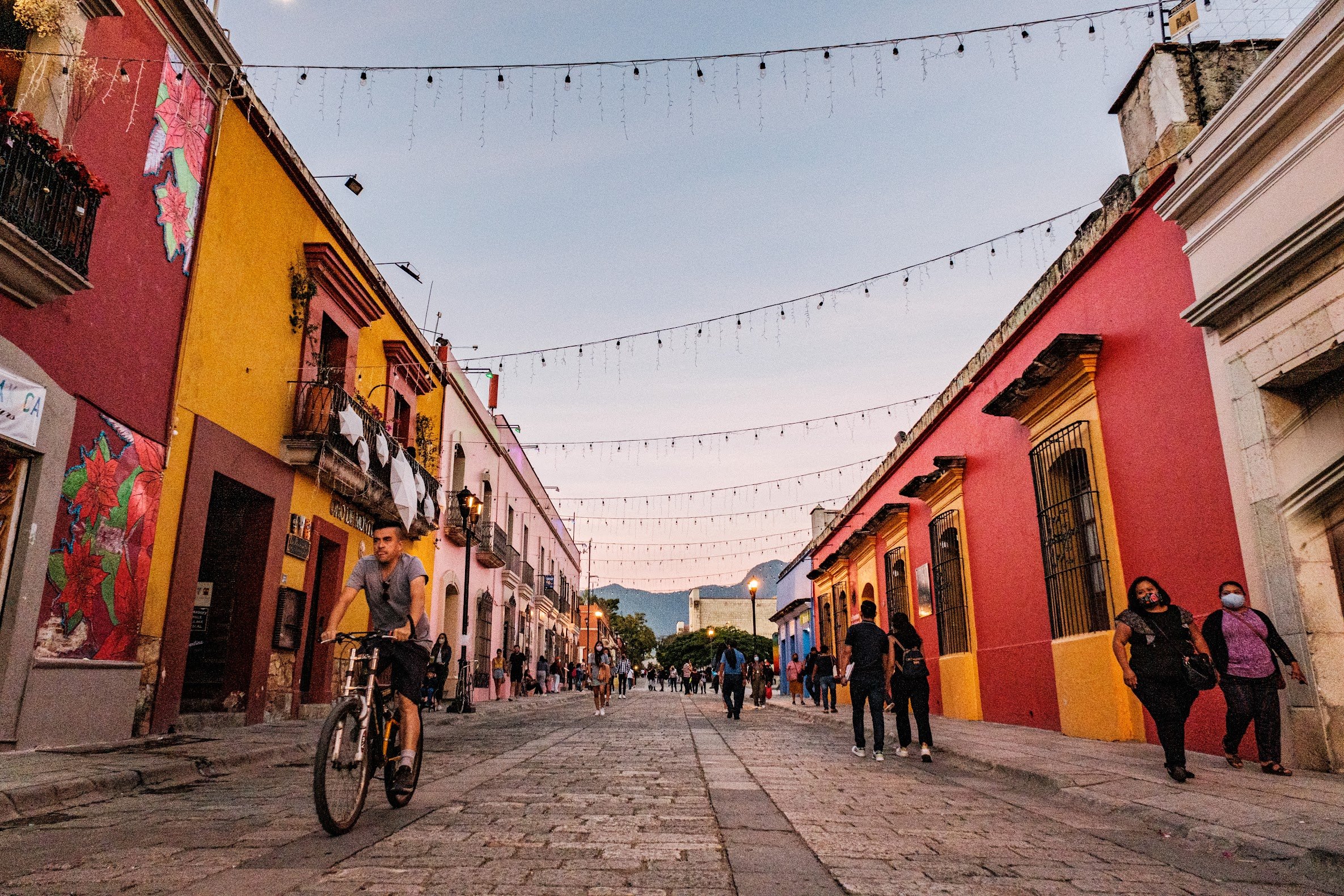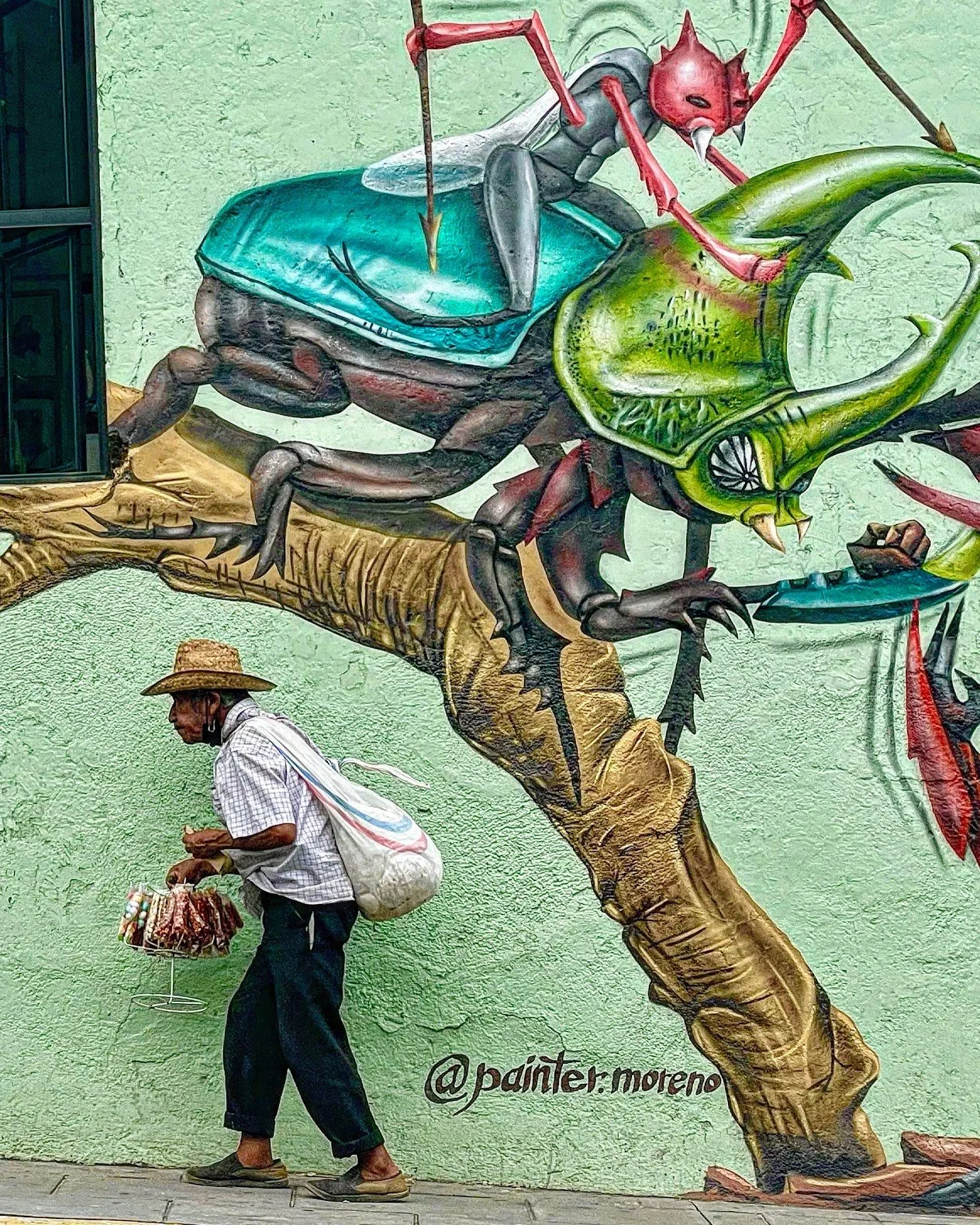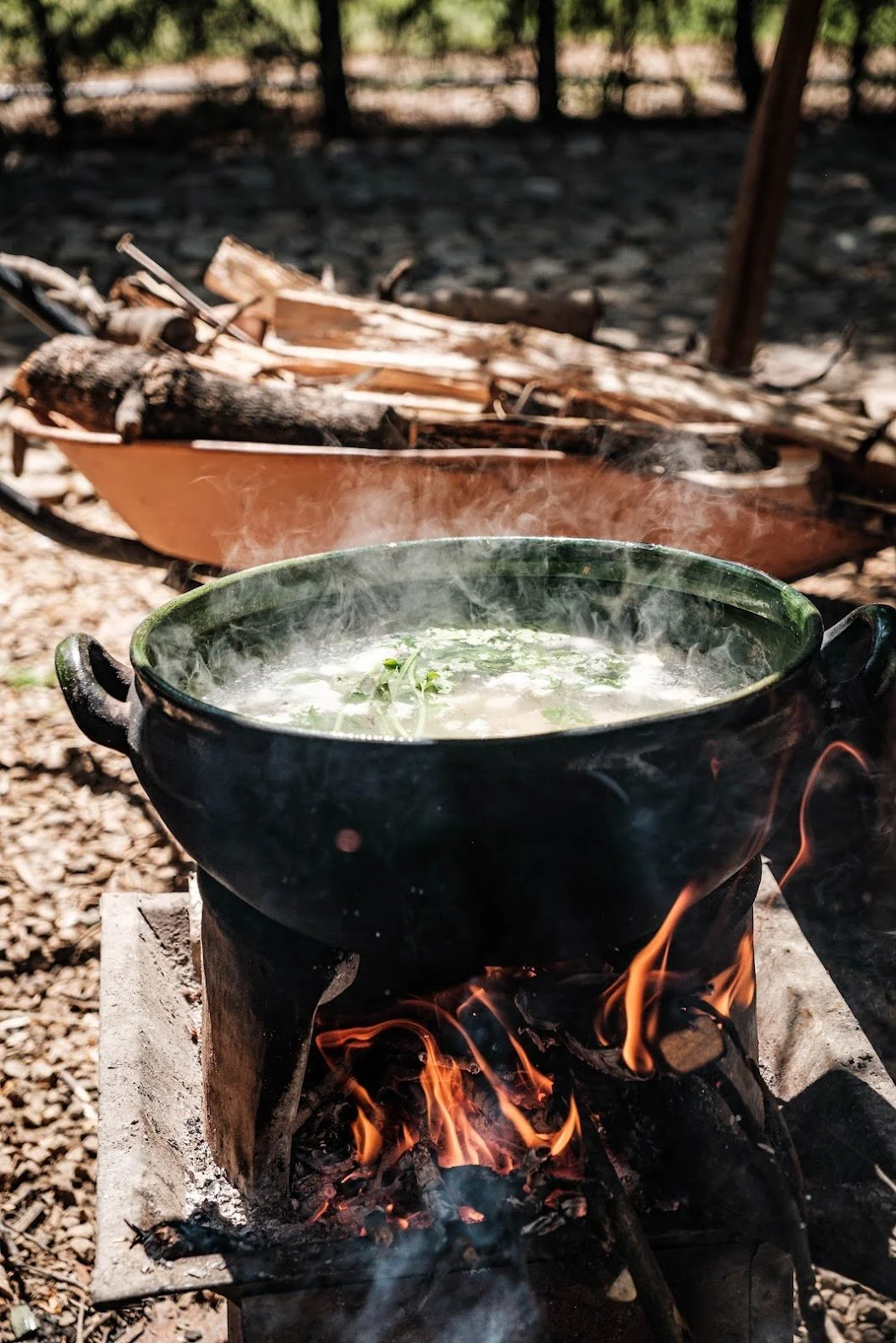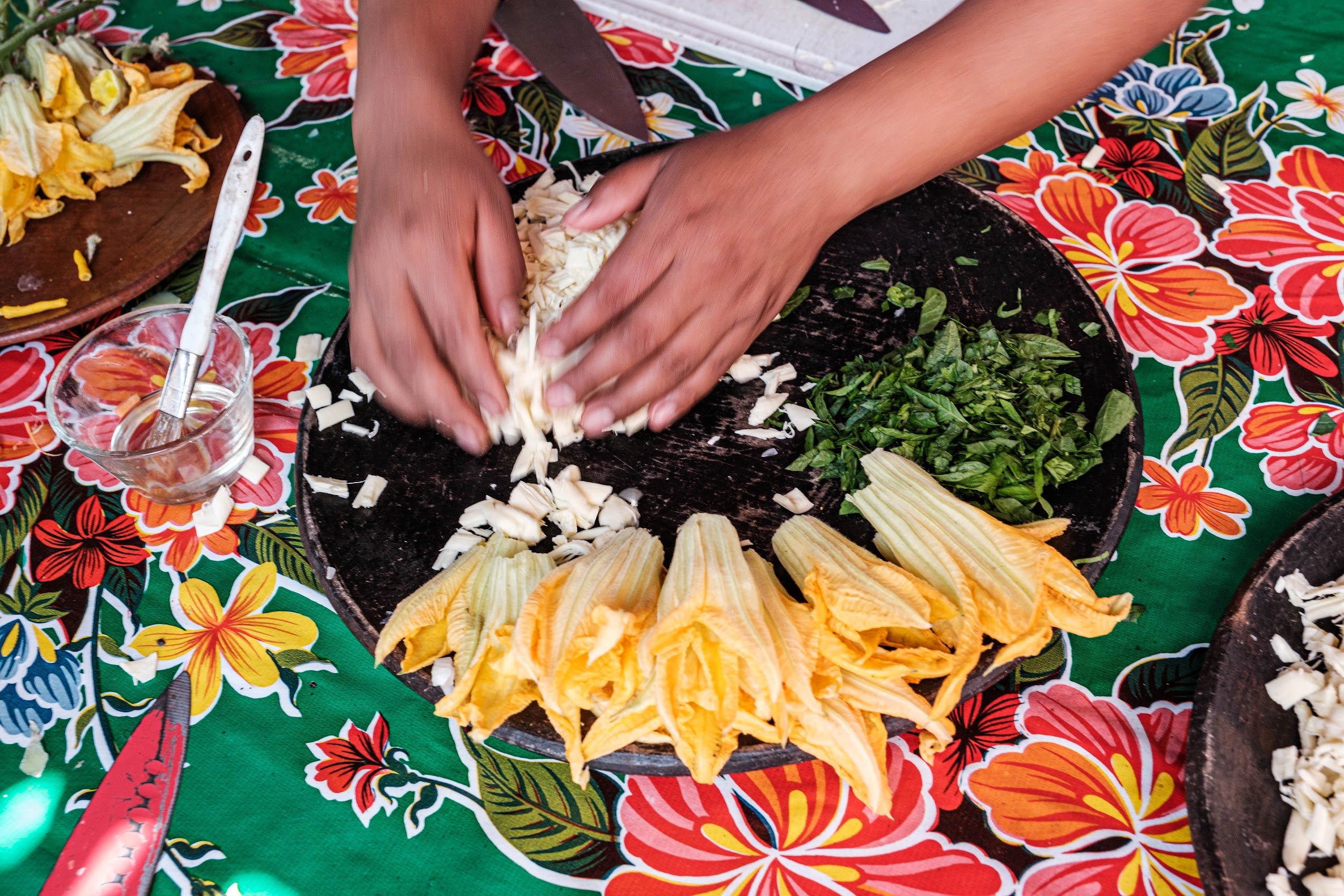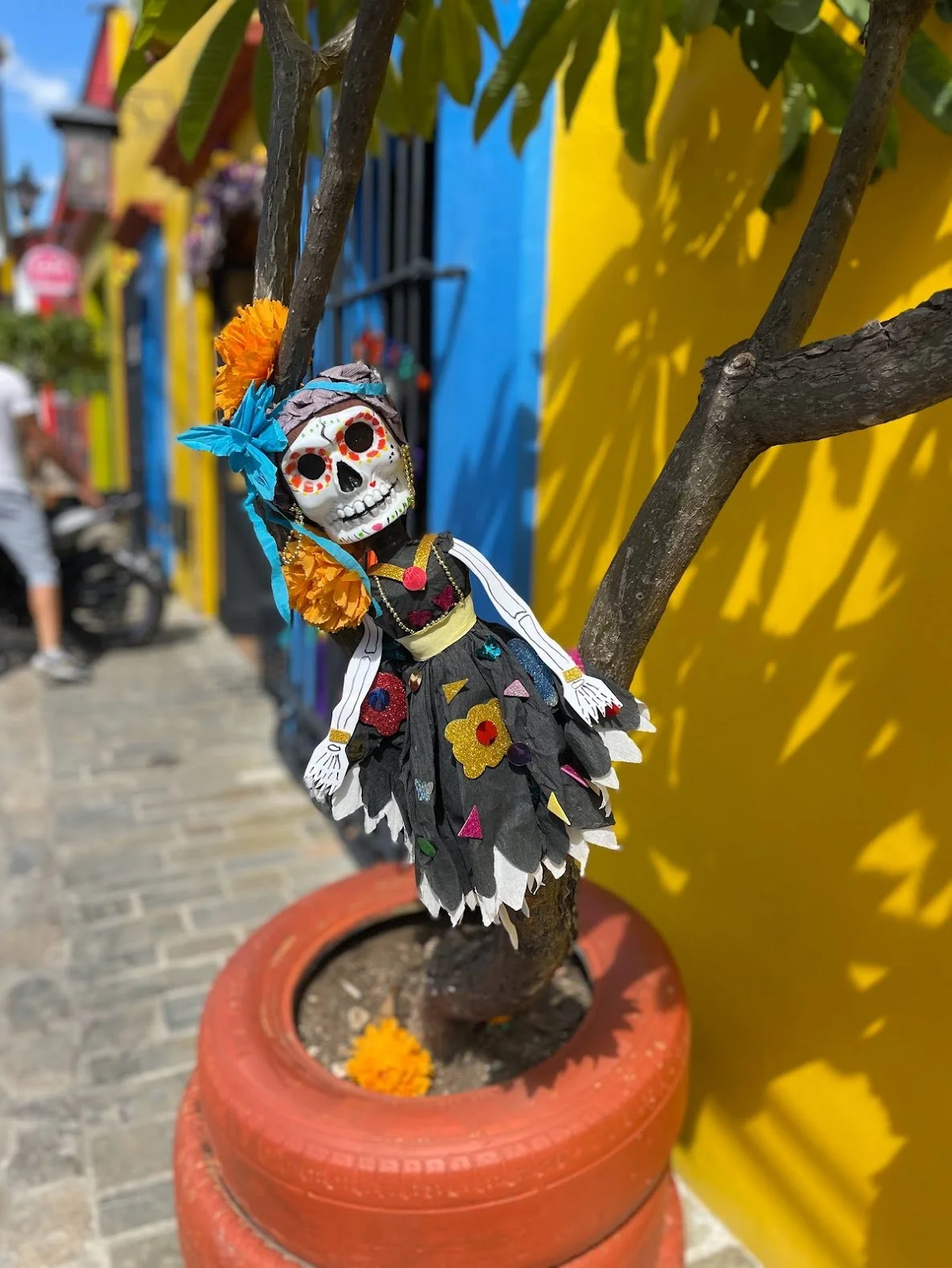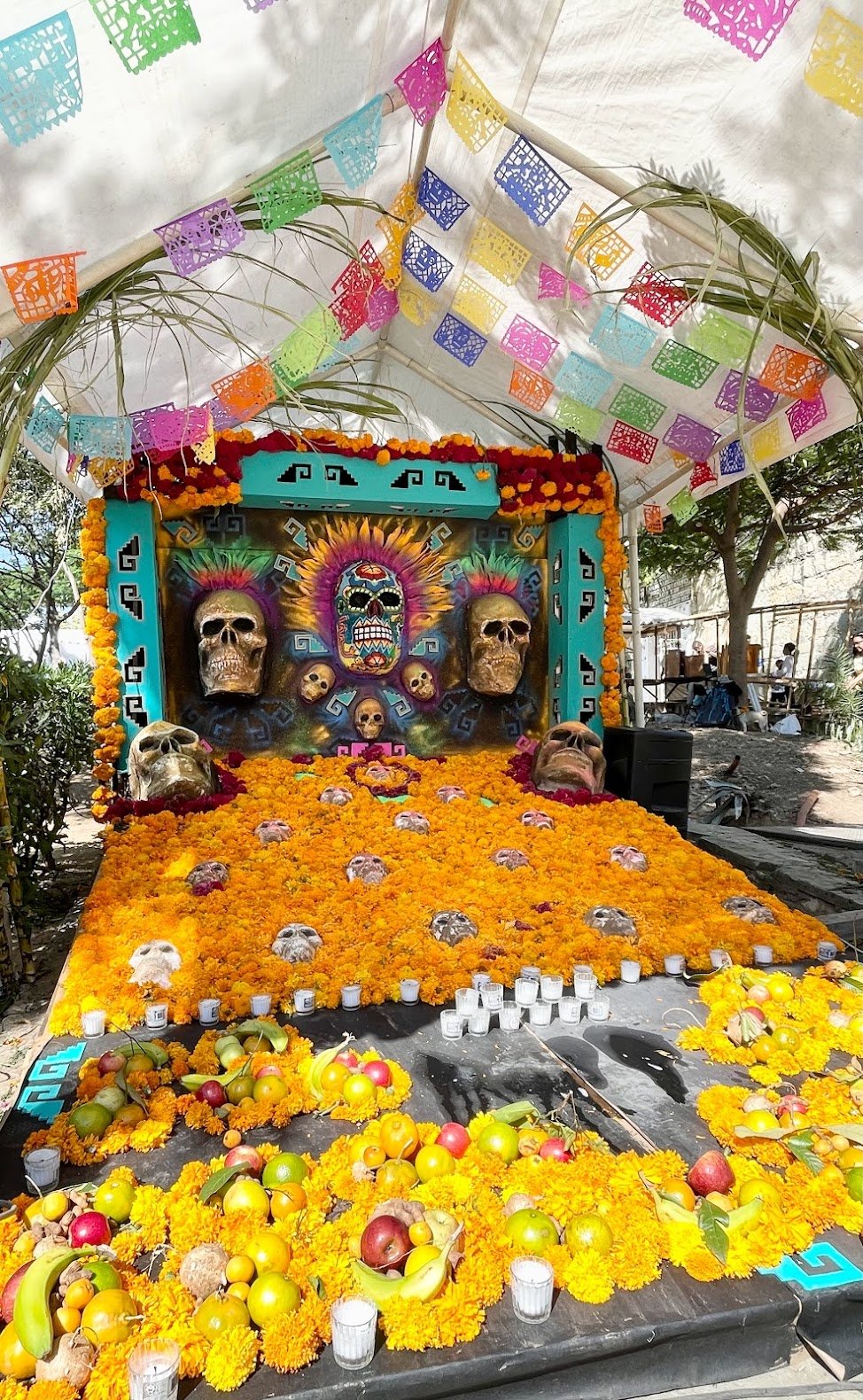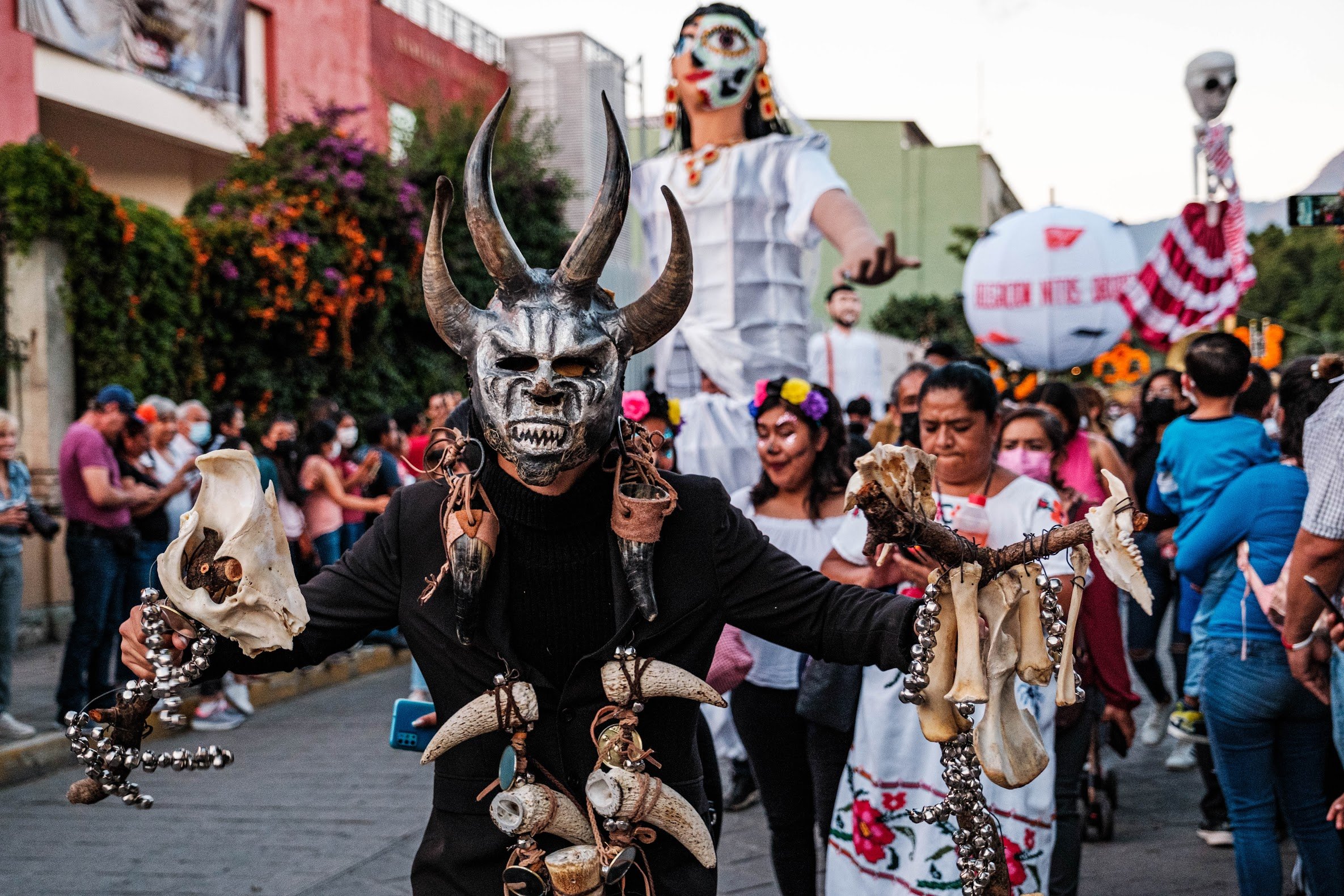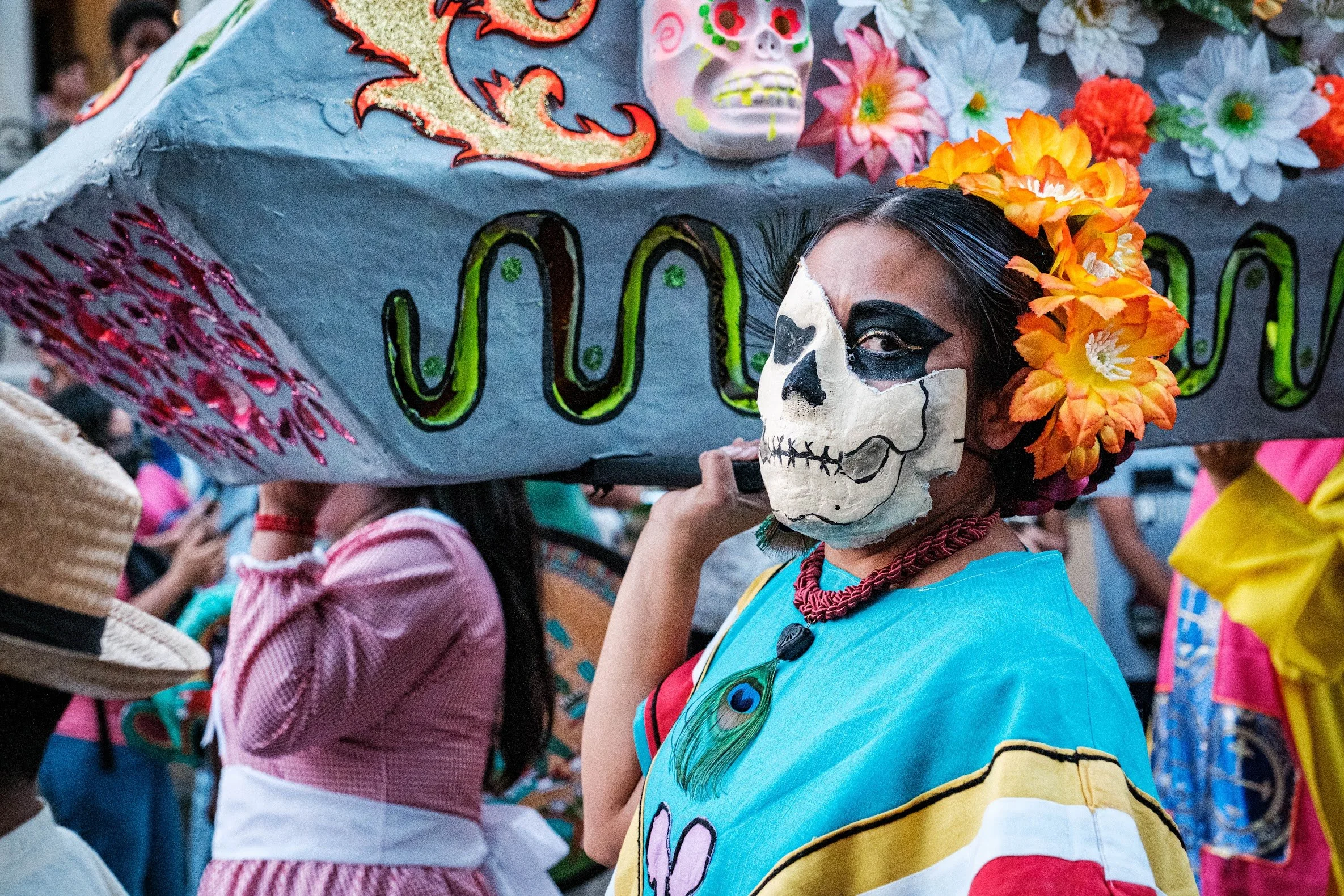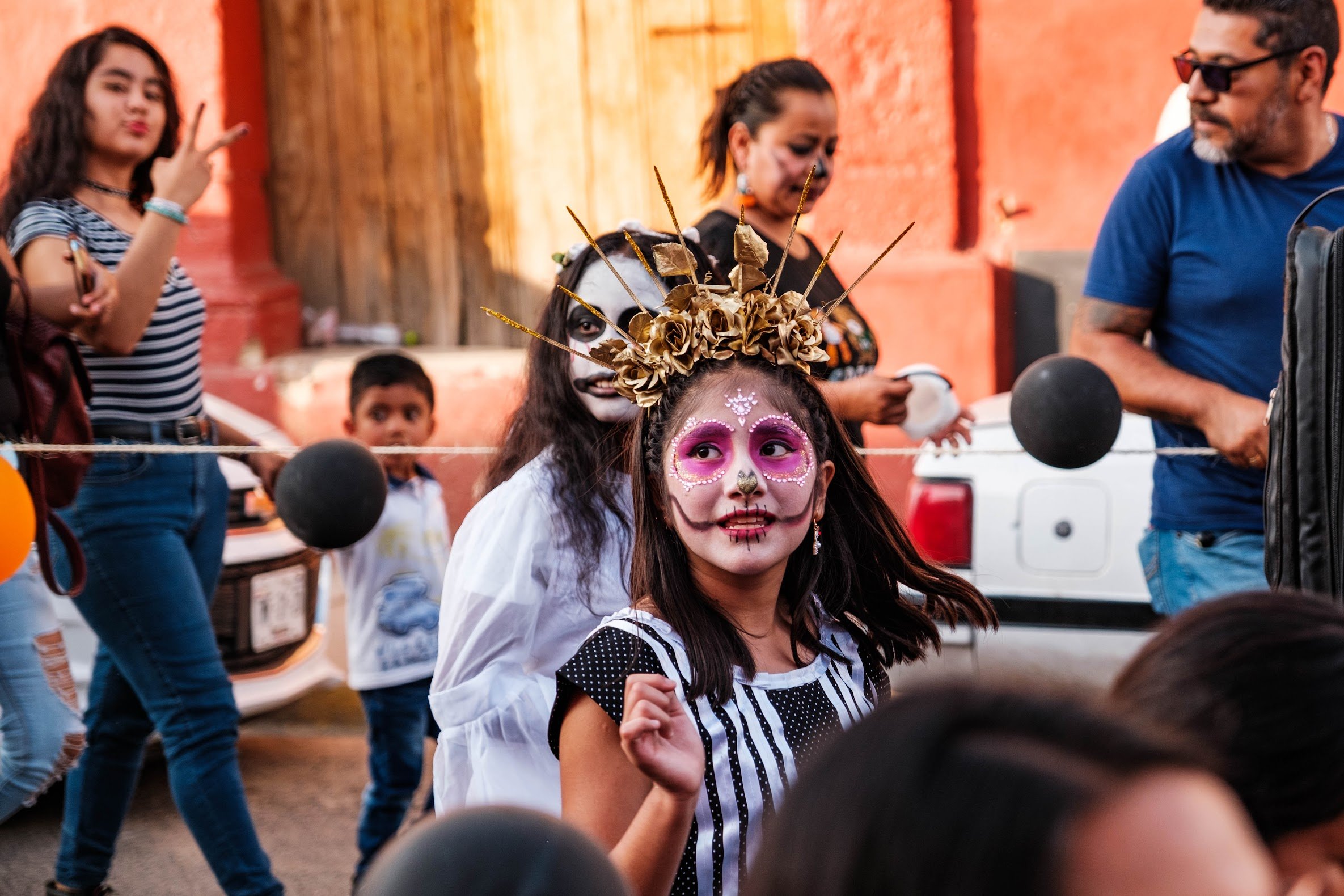
Oaxaca — City of Life & Death
This city pulsates with life and celebrates those who have moved beyond it.
Scroll ↓
If an all-day cooking class that’s also a great hang and an excuse to sip homemade mezcal isn’t your style, I don’t want to know you. At Quinta Brava, Chef Miguel Alvarez and his team will have you chopping, eating and laughing for 6 straight hours. Learn about this and more things to do in Oaxaca when you buy my action-packed 10-day itinerary here.
Colorful and welcoming. Hip yet old world. Infused with the pride of Zapotec culture, yet embracing of modern Mexico’s foodie standards. Oaxaca de Juarez defies easy labels and is all the better for it. With one of the most charming Centros in all of Latin America, Oaxaca is unapologetically itself on every level. Majestic churches, historic buildings, stunning street art, indigenous gardens, massive markets, quirky small museums. . .Oaxaca has them all. Best of all, its undercurrent of edge and counterculture keeps this vibrant town from being too consumed by expat and digital nomad influence. Pretty and vibrant, yes. Blandly beautiful? Never. Planning a trip to Oaxaca? Have a perfect trip when you buy my action-packed 10-day itinerary here.
People grieve differently. Communities grieve differently. And, so do cultures. There is an undeniable beauty to the display of grief during Dia De Los Muertos (The Day of the Dead) in Oaxaca, the holiday’s spiritual home. The multi-day celebration embraces death in an explosion of joy and beautiful memories in a way that speaks to my own grieving heart. Aztec, Zapotec and other ancient indigenous peoples viewed mourning as rather impolite to the dead and that mindset endures today. For Oaxaquenos, loved ones simply transition to another phase of life and are best honored by actively keeping their spirits alive through celebrations and family stories. During Día de los Muertos, altars (called ofrendas), pop up everywhere — in homes, cemeteries, and on the streets. These aren’t for worshipping; rather, they welcome lost loved ones back to the mortal coil each year from October 28-November 2 with cheerful marigolds, family photos, and favorite items from a past existence. During these six days, skeletons dominate the city — in murals, decorations, parade costumes, and in the painted faces of celebrants young and old. This is not meant as a morbid depiction, but instead a status leveling. It recognizes that under our clothes and skin, we are ALL skeletons.
